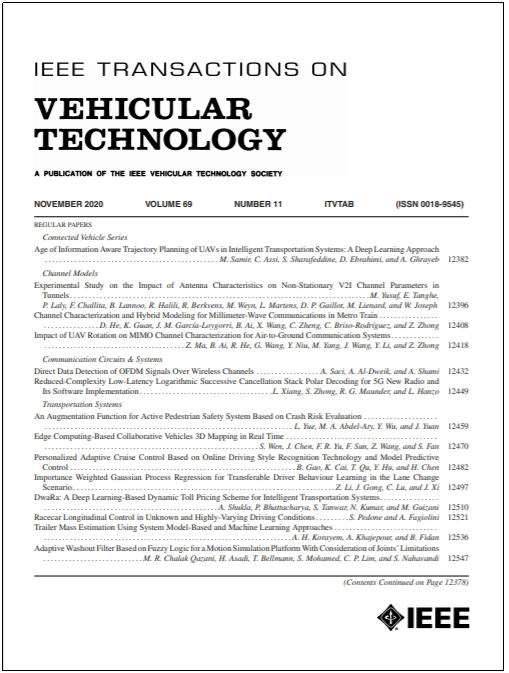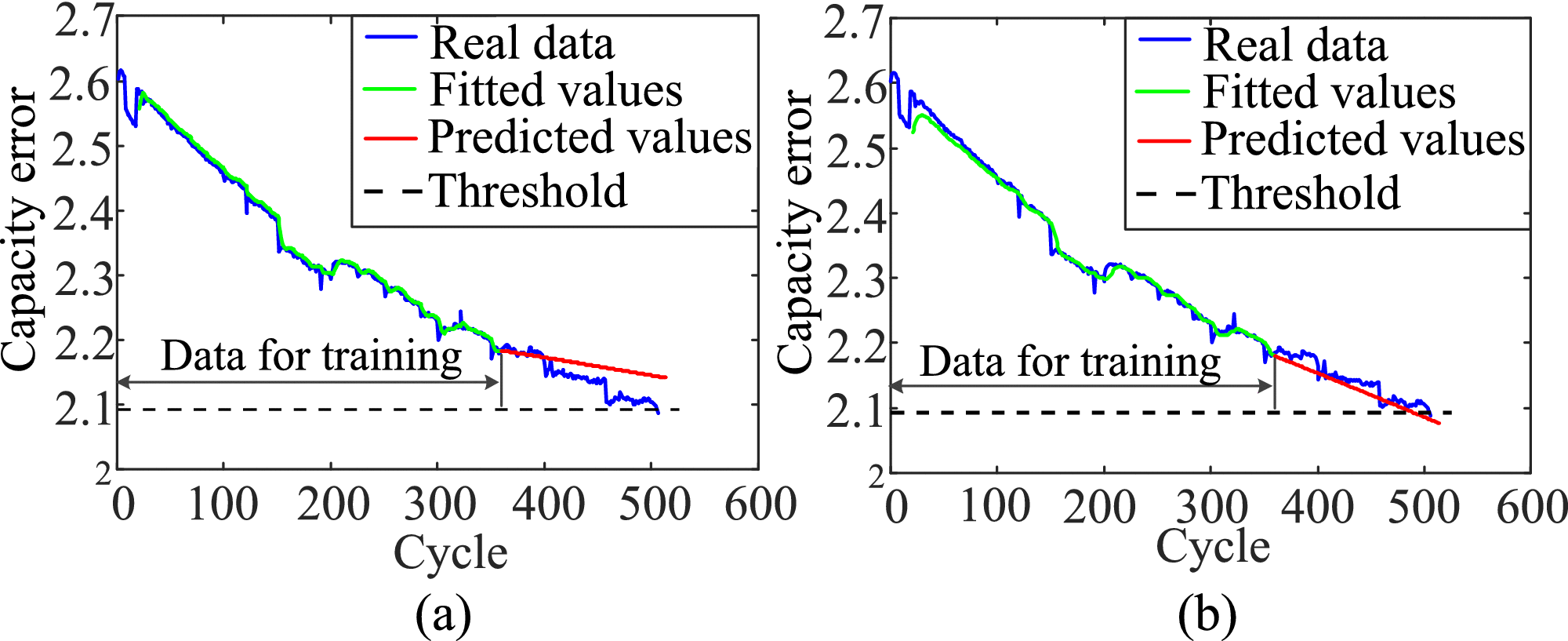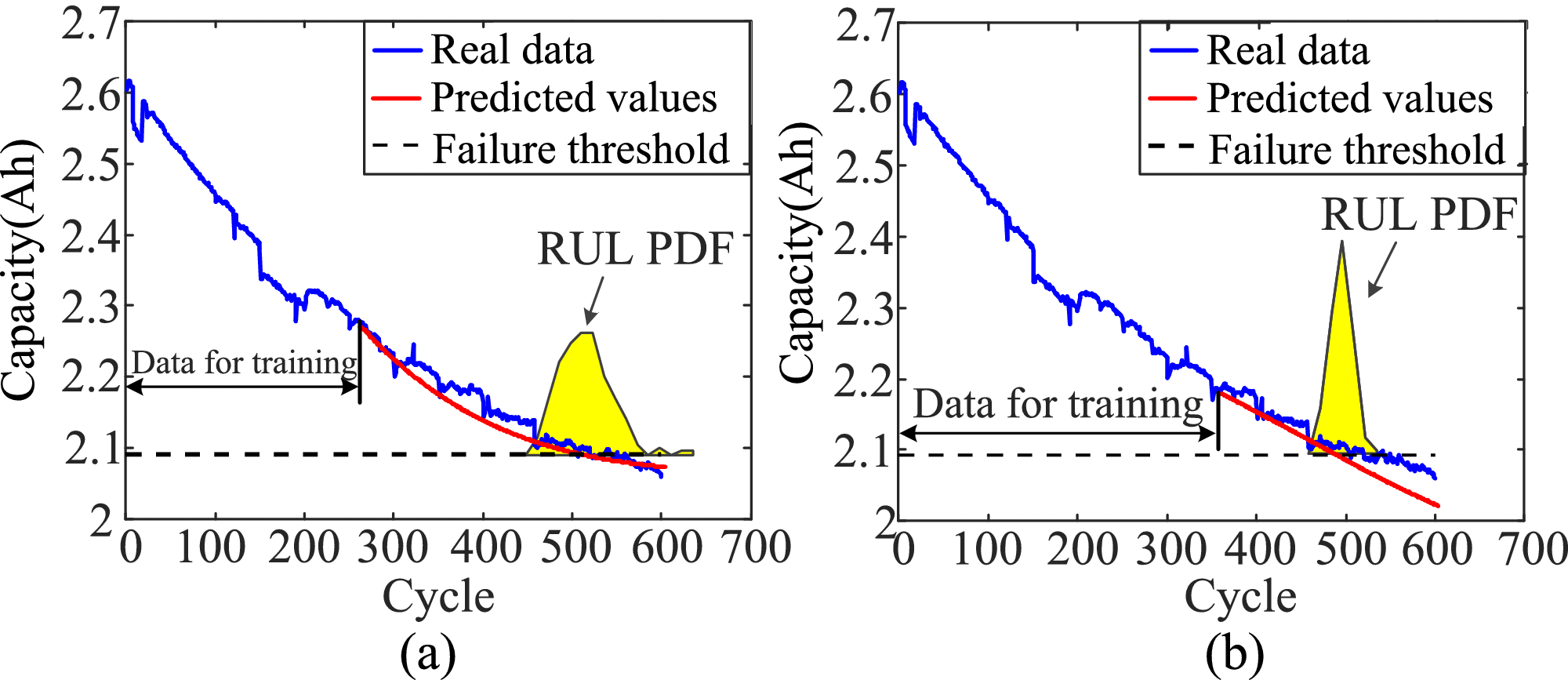|

|
摘要: Remaining useful life (RUL) prediction of lithium-ion batteries can assess the battery reliability to determine the advent of failure and mitigate battery risk. The existing RUL prediction techniques for lithium-ion batteries are inefficient for learning the long-term dependencies among the capacity degradations. This paper investigates deep-learning-enabled battery RUL prediction. The long short-term memory (LSTM) recurrent neural network (RNN) is employed to learn the long-term dependencies among the degraded capacities of lithium-ion batteries. The LSTM RNN is adaptively optimized using the resilient mean square back propagation method, and a dropout technique is used to address the overfitting problem. The developed LSTM RNN is able to capture the underlying long-term dependencies among the degraded capacities and construct an explicitly capacity-oriented RUI, predictor, whose long-term learning performance is contrasted to the support vector machine model, the particle filter model, and the simple RNN model. Monte Carlo simulation is combined to generate a probabilistic RUL prediction. Experimental data from multiple lithium-ion cells at two different temperatures is deployed for model construction, verification, and comparison. The developed method is able to predict the battery's RUL independent of offline training data, and when some offline data is available, the RUL can he predicted earlier than in the traditional methods. |
部分图片:
|
| 
图1 LSTM RNN-based RUL prediction results for cell 1: (a) prediction results with no methods to prevent overfitting; (b) prediction results with dropout. | 
图2 LSTM RNN-based prediction results of RUL for cell 1: (a) prediction results at 253 cycles; (b) prediction results at 354 cycles. | 引文信息: Zhang Y , Xiong R , He H , et al. Long Short-Term Memory Recurrent Neural Network for Remaining Useful Life Prediction of Lithium-Ion Batteries[J]. IEEE Transactions on Vehicular Technology, 2018:1-1. (下载链接) | 其他相关论文: 1. Zhang Y Z , Xiong R , He H W , et al. A LSTM-RNN method for the lithuim-ion battery remaining useful life prediction[C]// 2017 Prognostics and System Health Management Conference (PHM-Harbin). 2017.(下载链接)
2. Zhang Y , Xiong R , He H , et al. State of charge-dependent aging mechanisms in graphite/Li(NiCoAl)O_2 cells: Capacity loss modeling and remaining useful life prediction[J]. Applied Energy, 2019, 255(Dec.1):113818.1-113818.8. (下载链接)
|
|